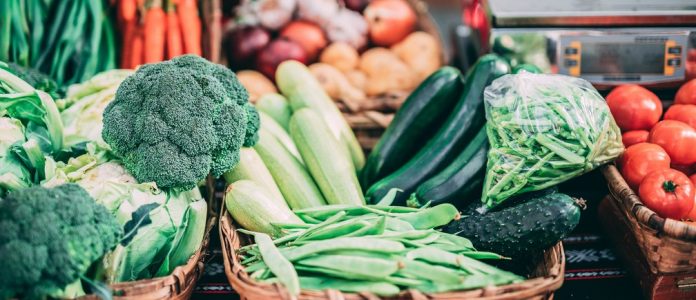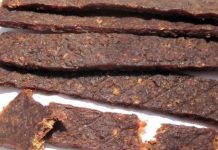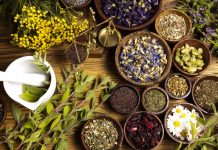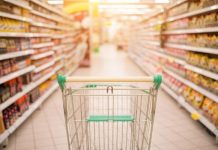How do you grow seeds? It can be difficult to harvest seeds, requiring patience, practice and a good deal of knowledge. That said, it is an extremely satisfying undertaking.
Eventually, proper harvesting of seeds will lead to year-round cultivation of a sustainable source of food.
The development and maintenance of a thriving garden is an integral part of the life of every prepper. Not only is planting, nurturing, growing and harvesting fruits and vegetables a great way to live sustainably and independently, it is also economically sound.
American families spend more than $13,000 per annum on food per household on average. That figure is a large percentage of the average family’s budget and the cost continues to rise with inflation, economic instability and other factors.
To many, putting fresh fruits and vegetables on the table is a struggle. Healthy eating shouldn’t be a luxury, and yet it is cost-prohibitive too.
Related: Storage-Friendly Survival Gardening
In fact, many Americans are becoming increasingly dissatisfied with store-bought-product price. The safety of foods grown on large farms has come into question with growth hormone and other controversial additives.
Organic foods are slightly more costly than non-organic food choices, and are not available in many rural areas. The fact that many foodstuffs branded as “organic” or “all-natural” are misrepresented as a strategic marketing tool by food distributors adds even more aggravation to the mix.
Shoppers pay a high price for fresh food that does not meet the expectations we demand from food that is natural, organic, and sustainable. Something’s got to give.
How to Harvest Seeds Properly
The following is a step-by-step description of the correct method for efficient seed harvesting.
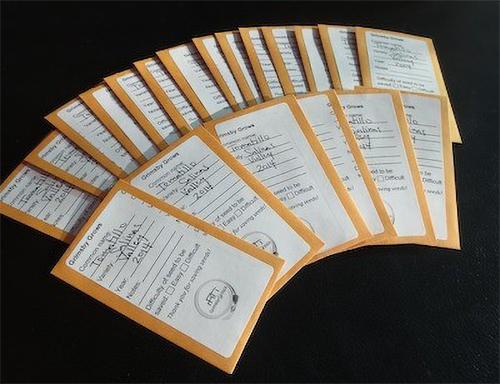

- Gather required gardening equipment. This includes a shovel, pruning shears, scissors, containers, envelopes, and a pen for labeling and notes taking.
- Allow the plant to fully before attempting to harvest seeds.
- Remove seeds, seed pods, capsules or bulbs and put in an envelope or container.
- Separate the seeds from any surrounding pods.
- Store seeds in paper envelopes or bags to reduce moisture and humidity.
- Place your seeds in a cool, quiet, dry, ventilated room.
- Plant seeds according to planting calendar.
Sustainable Food: What to Grow
You need a thriving garden before you can harvest seeds. Plant a variety of hearty fruits and vegetables besides spices, edible flowers and everything else that may add flavor and nutrition to your diet.
In terms of the seeds you should focus on harvesting, the best fruits and vegetables include:
- Peppers
- Peas
- Beans
- Squash
- Melon
- Cucumbers
- Broccoli
- Beets
- Potatoes (yes, potatoes do seed)
- Tomatoes
Learning the fundamentals of pollination, seeding, and a plant’s life cycle is extremely beneficial. It will help you harvest seeds correctly at the ideal time, and plant seeds at the best time of year.
Remember that planting your crops and collecting seeds will help you remain organized and have a thriving supply of produce regardless of season.
If you’re new to gardening, be aware that growing self-pollinating crops is considered easy. Tomatoes, beans, lettuce and peas are perfect for beginners to learn proper seed harvesting.
It is also important to consider the difference between hybrid and open-pollinated plants.
Related: 47 Gardening Hacks
Seed harvesting is relatively simple; gathering, washing, drying, storing and planting. There are m any useful strategies to adopt. Seed harvesting time depends on the available fruit or vegetable.
There are helpful guides to help you determine when you want to pick and dry the seeds, so you don’t harvest them at the wrong point in the cycle.
Remember to use your planting calendar and prepare accordingly. Many fruits and vegetables produced seeds biennially, while others are annual or perennial.
Be selective about seeds you want to preserve; not every crop will be healthy.
Year-Round Harvest, Regardless of Climate
Even if you don’t live in the most temperate climates, year-round foods can grow successfully. Growing crops in colder areas can be difficult , but not impossible.
Some shoveling may be needed, but the number and variety of cold-hardy crops you can successfully grow will amaze you. Besides sowing seeds, you can improve your garden by planting a decent amount of root vegetables.
This adds fruit, variety, flavor and quality to your annual harvest.
Note, in colder climates, biennials require two full growing seasons before seeds are produced. Conversely, in warmer areas, biennials planted in fall can produce seeds during the next season.
Carrots, beets and cabbage are some examples. In addition to the situation’s complexity, plants grow at various levels. Don’t let it stop you.
Simple note-taking will help you stay on top of your plant-growing schedule so you’re always on top of the situation and know what’s coming up, and when.
Related: Homemade Garden Pest Traps
To protect seed supply, proper storage is critical. Keep the seeds in a dry , well-ventilated area. An ideal dry, cool, dark space. Otherwise, if seeds are incorrectly stored, they may become useless.
Humidity and moisture exposure, for example, can allow mildew to grow on your seeds, contaminating them completely. Stable supply of healthy seeds is critical to a healthy, sustainable garden.
Manufacturing is incredibly costly. Most American families are struggling to afford nutritious, new, nutrient-rich foods due to ever-increasing prices and unavailability.
Production from commercial farms is also difficult, treating foods with growth supplements and other controversial additives.
The organic food market is not a solution to the issues of supermarket goods. Alternatively, organic goods are costly, limited supply, and sometimes misrepresented.
Related: What is Hydroponic Gardening?
More and more Americans are self-reliant and take charge of their food supplies. Growing a large fruit and vegetable garden gives you the opportunity to provide year-round supply of new, nutrient-rich, pesticide-free produce.
It is done by harvesting and carefully planting seeds from your good crops. This method includes using a diary, making notes, and basic plant biology comprehension.
Your garden will take some time and effort to plant and develop, but each season it will grow stronger. You and your family can eat fresh fruits and vegetables, make jams and jellies, and eat foods that last for years.



